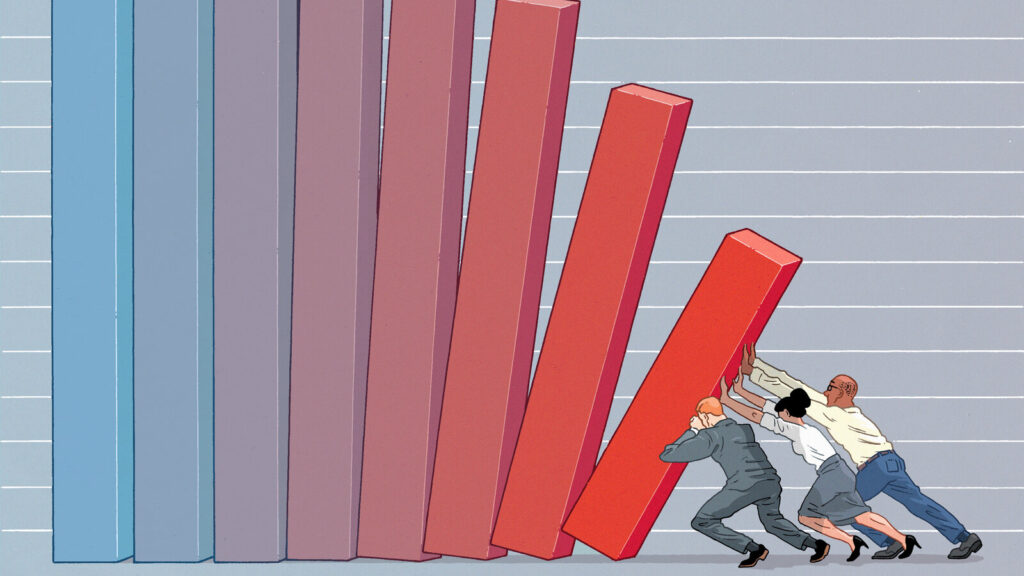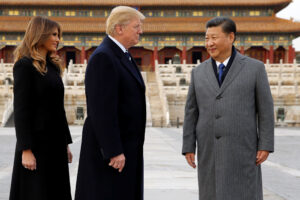By all appearances, the Russian economy is heading for the kind of cliff most regimes don’t survive. The numbers are dire, the language coming out of Moscow is alarmingly defensive, and for the first time in years, even Vladimir Putin can’t pretend the house isn’t on fire.
Bloomberg recently dropped a quiet bombshell: Russia is now less than a year away from a potential full-blown banking collapse. Not a downturn. A collapse. And the reasons for this are not some hidden flaw or isolated trigger—they’re systemic, obvious, and, frankly, of the Kremlin’s own making.
Let’s start with the basics. Consumer credit in Russia is spiraling. Defaults have shot up 70% in just four months. Thirteen of the country’s largest corporations are already unable to service their debts. Behind closed doors, state-affiliated think tanks are sounding the alarm, telling the Kremlin what it clearly doesn’t want to hear: the dam is cracking, and there’s no lifeboat in sight.
What’s truly alarming isn’t just the scale of the problem—it’s how little room there is for maneuver. In 2008, the United States faced a banking crisis of its own, but it had a few lifelines: international trust, the power to print the world’s reserve currency, and allies willing to coordinate bailouts. Russia has none of that. What it does have is a collapsing ruble, a shrinking export market, and a sanctions regime so vast it has boxed the entire financial system into a corner.
And then there’s the war. That $172 billion Russia spent on its military this year isn’t just driving its geopolitical delusions—it’s helping to torch its economy. Inflation is out of control. The central bank has had to raise interest rates to 20% to stem the bleeding. Compare that to 7% just a year ago. Salaries may be rising on paper, but so is the price of basic food. Potatoes—yes, potatoes—have gone up 90%. You get the picture.
Even Putin is now talking publicly about the economy’s woes, a rare moment of candor from a man who built his image on stoic control. But don’t mistake that for transparency—it’s desperation.
Behind the scenes, things are worse than anyone’s letting on. Corporate lending has dropped by nearly $19 billion in two months. Blue-chip Russian companies—names once considered solid—are teetering. By contrast, imagine if 20% of the top U.S. corporations were simultaneously on the brink of bankruptcy. It would be unthinkable. In Russia, it’s reality.
The real estate sector is also imploding. Construction is drying up. Cement production is down 10%. Furniture, appliances, lighting—across the board, industrial output is falling off a cliff. Housing prices are tanking. In some cities, values have dropped by up to 40%. This isn’t a dip—it’s a nosedive.
Meanwhile, fossil fuel revenues—Russia’s economic lifeline—are evaporating. Oil exports are in decline, and forecasts are getting uglier. From $189 billion in 2024 to a projected $137 billion in 2026, that’s a $52 billion black hole, and growing. Forty percent of Russia’s budget is tied to fossil fuels. Lose that, and the Kremlin loses its cash flow.
The government’s response? Not exactly confidence-inspiring. They’re restricting how much money citizens can withdraw—$550 a day, max—and banks can freeze your funds for 48 hours if they suspect “suspicious behavior.” It’s a policy that screams panic. Officially, it’s to combat fraud. Realistically, it’s about preventing bank runs.
Worse still, the regime is quietly prepping the public for the idea that taking money out of the system might be unpatriotic or dangerous. The media is awash with vague warnings about cyberattacks and scams—anything to justify financial lockdowns.
But it’s not working. Russians are starting to see through it. Bloomberg’s report, damning as it was, relied largely on internal Russian sources—Kremlin-aligned analysts who, even while softening the message, couldn’t deny the reality.
So here we are. A regime fueled by aggression, now trapped in its own economic war. Printing money is still on the table—and if they go down that road, hyperinflation won’t be far behind. A single major bank failure could ignite the chain reaction everyone fears: a cascade of collapses that no one, not even the central bank, will be able to stop.
Russia is bleeding. Quietly, steadily, and without the tools to clot the wound.



